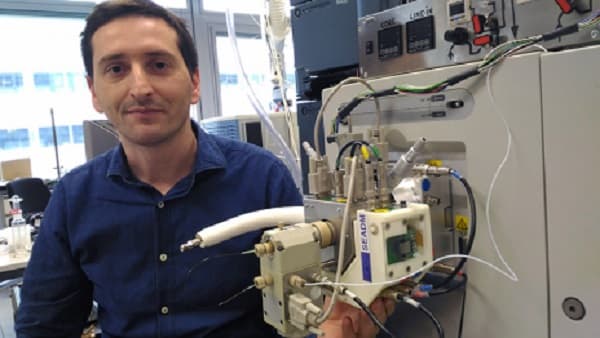ETC Scientists Design Highly Sensitive Gas Analyser - Medicine and Security Among Beneficiaries
ETH Zurich lecturer Pablo Sinues and his team of researchers have hit a new high in sensitizing trace gas analysers, developing what they call the “most sensitive [analyser] in the world†for measuring the smallest traces of volatile chemical compounds in the air.

Sinues, a lecturer at the Laboratory of Organic Chemistry, devised a mass spectrometer in which gas molecules are ionised before they are measured. This technology is called secondary electrospray ionisation (SESI), and involves interfacing a device that ionises airborne molecules to an available mass spectrometer. Sinues has been working hands down in optimising this technology ever since he was a doctoral student at Yale, and together with researchers from a Spanish company and as a part of a European Union research project, he has now succeeded in perfecting the geometry of the SESI chamber.
The researchers used computer models to simulate the intricacies of the ionisation model. As a result, the SESI generation is 5 times more sensitive than previous such attempts in detecting even the lowest of gas concentrations.
In order to prove the establishment, drugs and endogenous hormones were seeded in the air in negligible amounts and as it turned out, the spectrometer was able to detect them. The scientists now say that concentrations in the range of one in a trillion parts are enough to be detectable. This makes the SESI device just the perfect one for breath analysis, which was demonstrated through the uptake and transformation of injected drugs in laboratory mice.
These sniffer instruments, after which sniffer dogs were named, are not limited to use in medicine or detection of explosives. Sinues is currently working on a biological research project. When infested by pesticides, plants produce fragrances that attract insects against the pest infestation. But it is difficult to detect such fragrances since their concentrations are often low. Sinues is convinced that the SESI mass spectrometer could benefit this line of research.
Similarly, it could also be employed in the wine industry to measure the composition of odour-active molecules in grapes, which is too low for any ordinary device to measure.
Source: #-Link-Snipped-#

The researchers used computer models to simulate the intricacies of the ionisation model. As a result, the SESI generation is 5 times more sensitive than previous such attempts in detecting even the lowest of gas concentrations.
In order to prove the establishment, drugs and endogenous hormones were seeded in the air in negligible amounts and as it turned out, the spectrometer was able to detect them. The scientists now say that concentrations in the range of one in a trillion parts are enough to be detectable. This makes the SESI device just the perfect one for breath analysis, which was demonstrated through the uptake and transformation of injected drugs in laboratory mice.
These sniffer instruments, after which sniffer dogs were named, are not limited to use in medicine or detection of explosives. Sinues is currently working on a biological research project. When infested by pesticides, plants produce fragrances that attract insects against the pest infestation. But it is difficult to detect such fragrances since their concentrations are often low. Sinues is convinced that the SESI mass spectrometer could benefit this line of research.
Similarly, it could also be employed in the wine industry to measure the composition of odour-active molecules in grapes, which is too low for any ordinary device to measure.
Source: #-Link-Snipped-#
0
